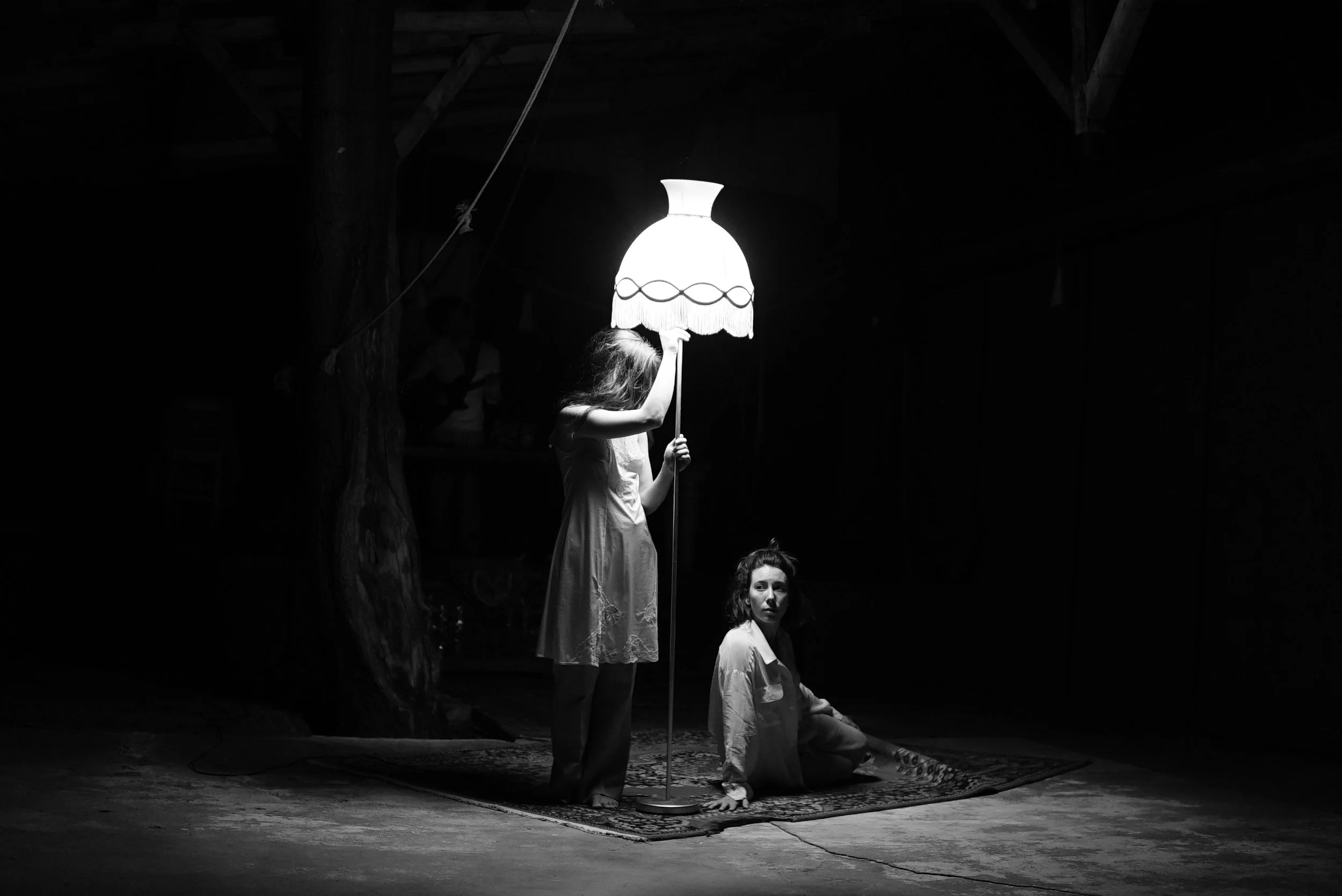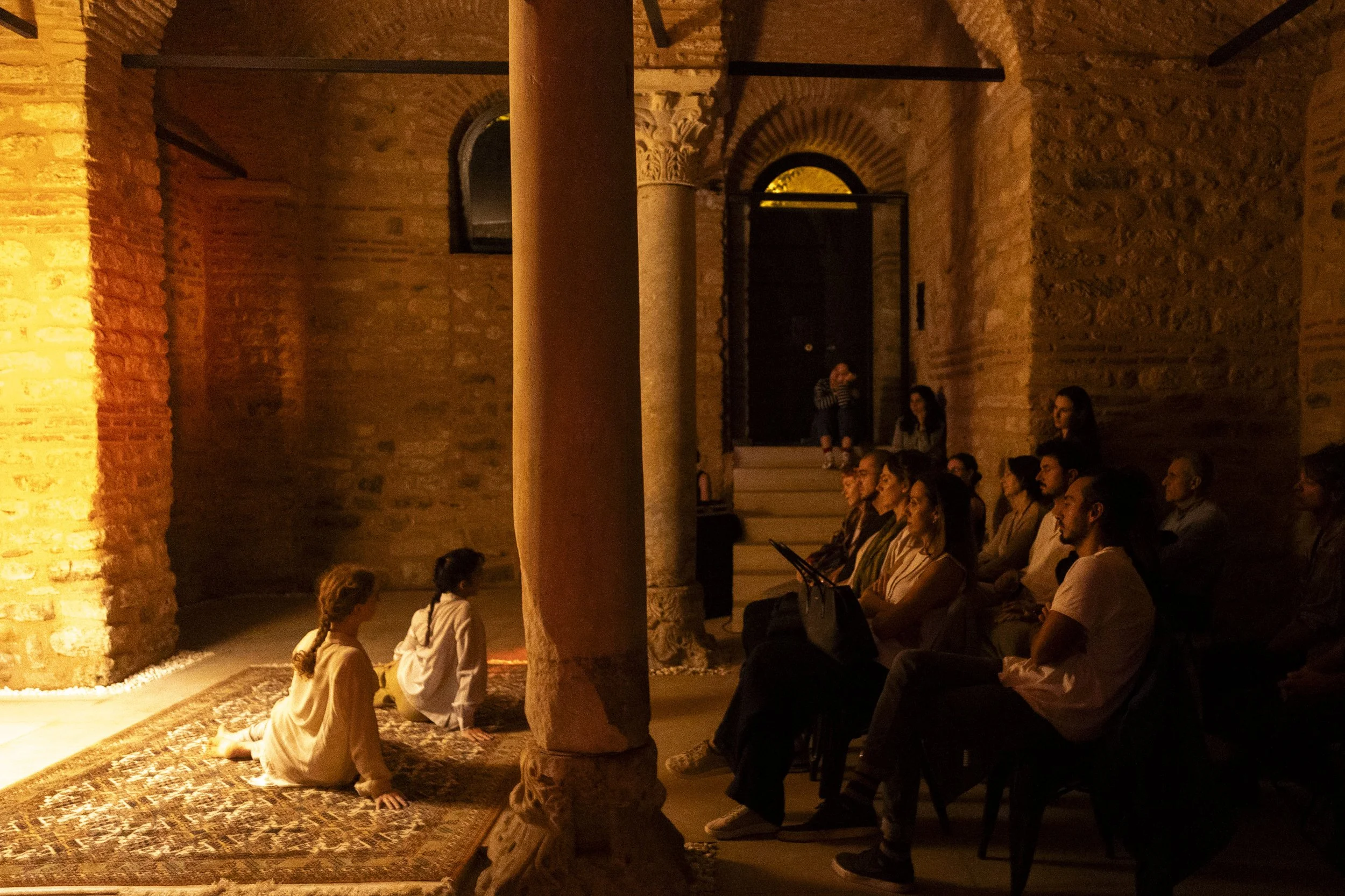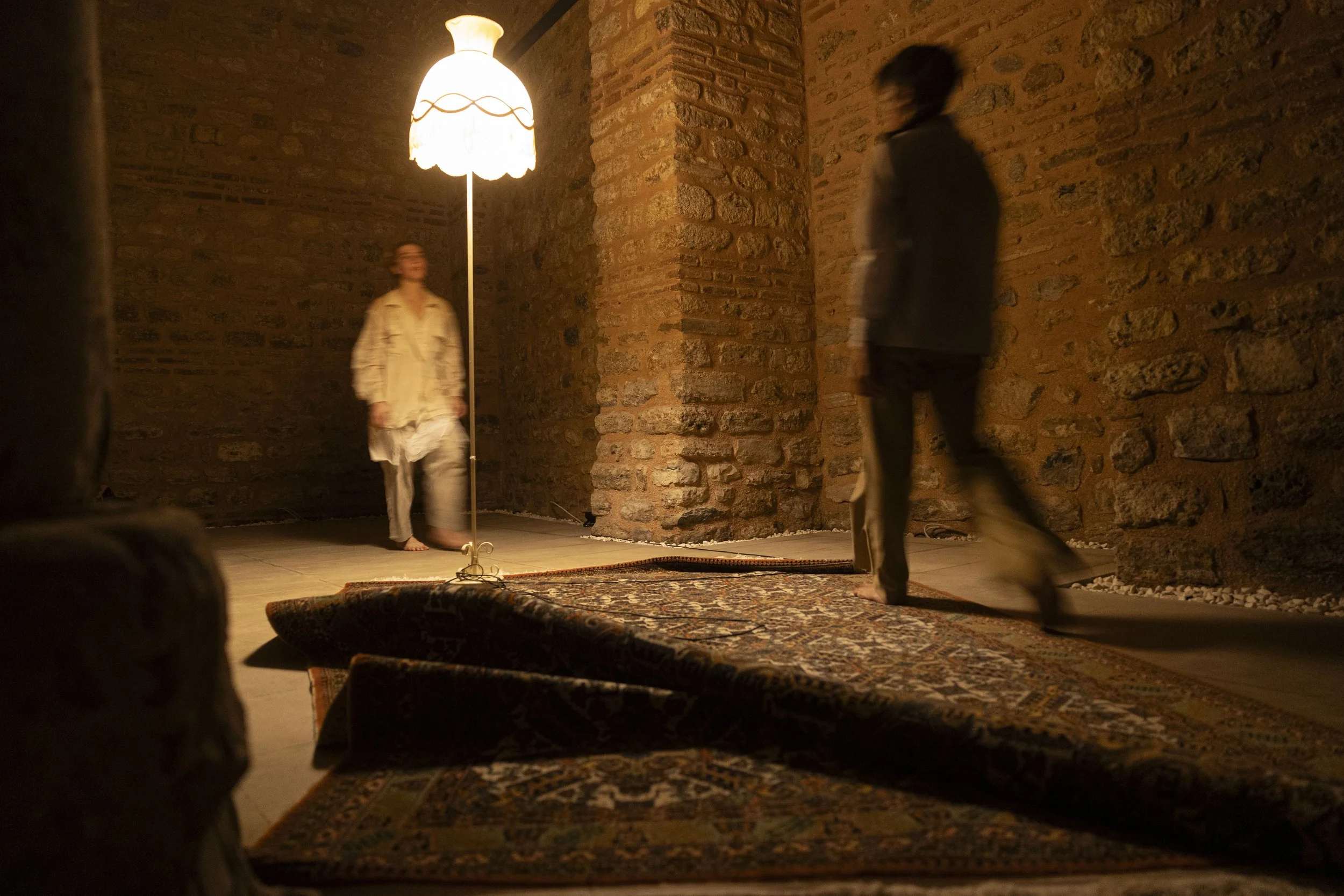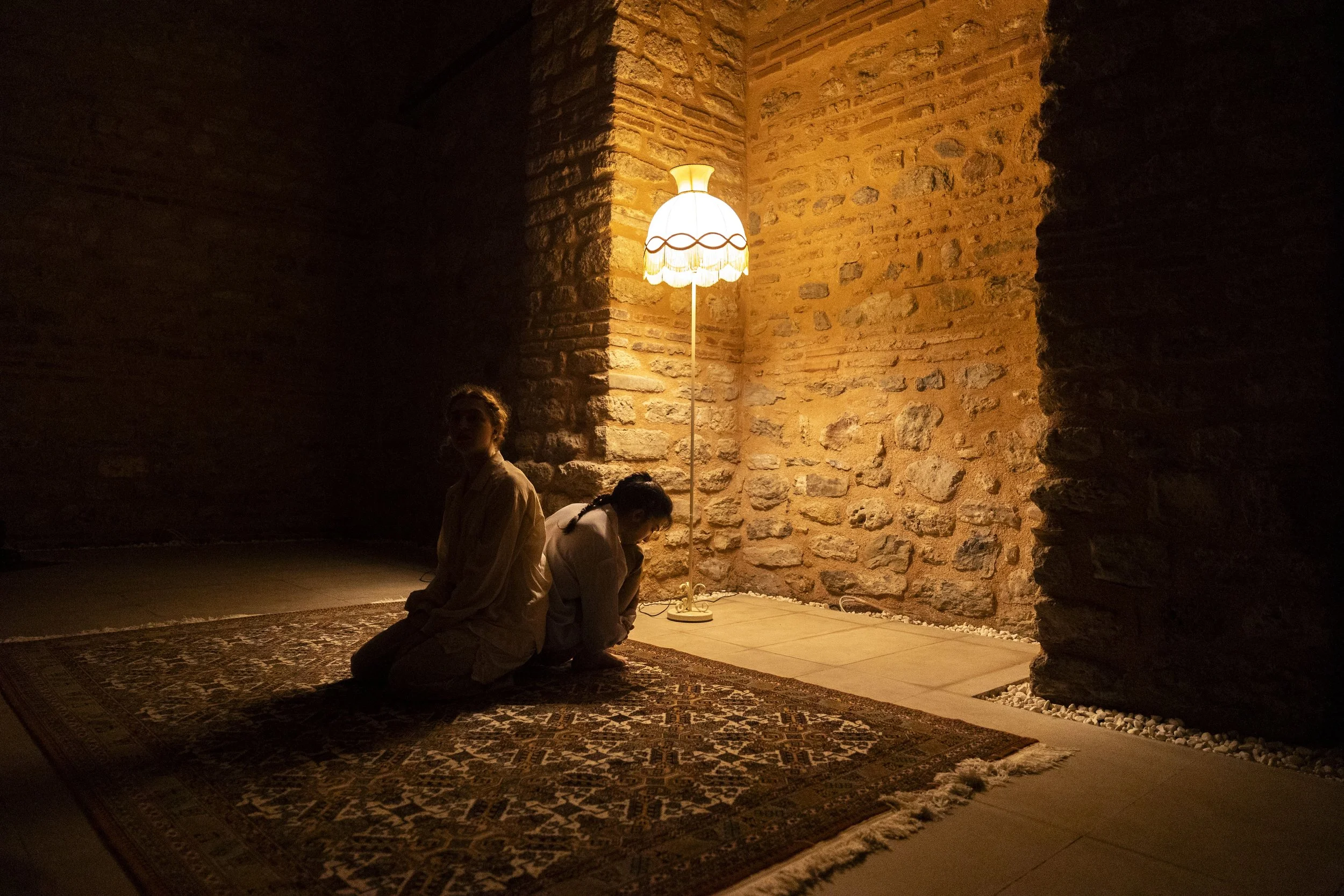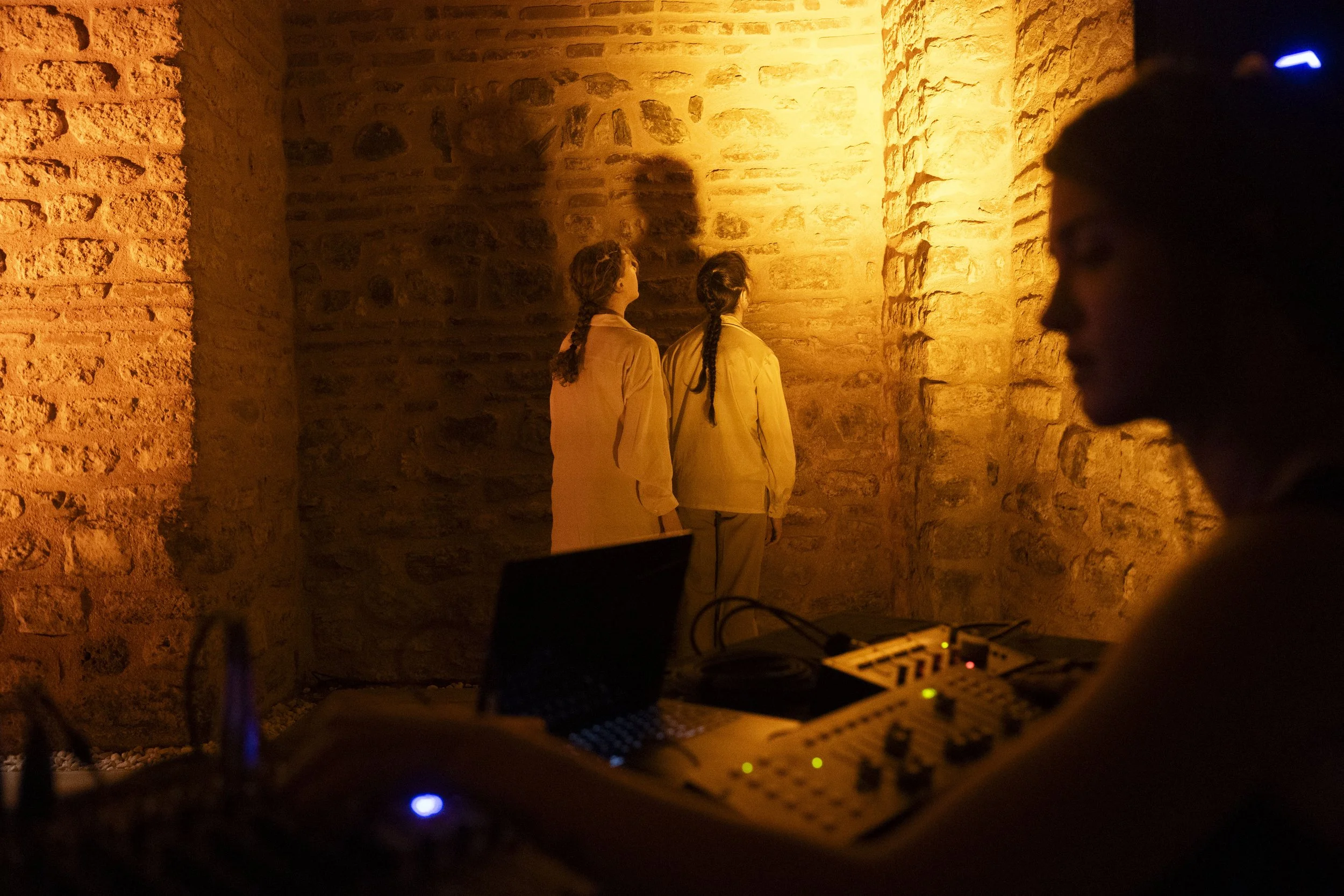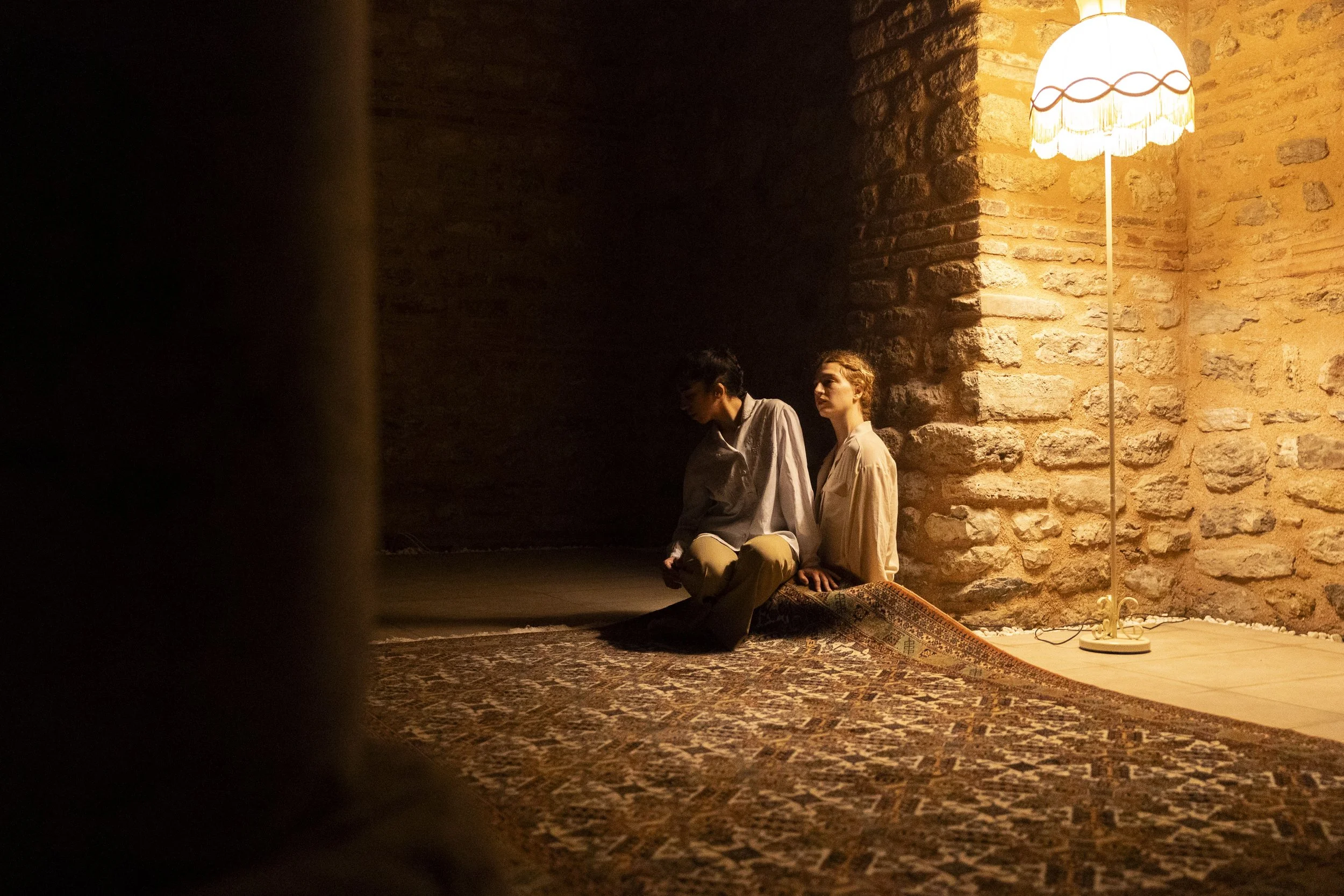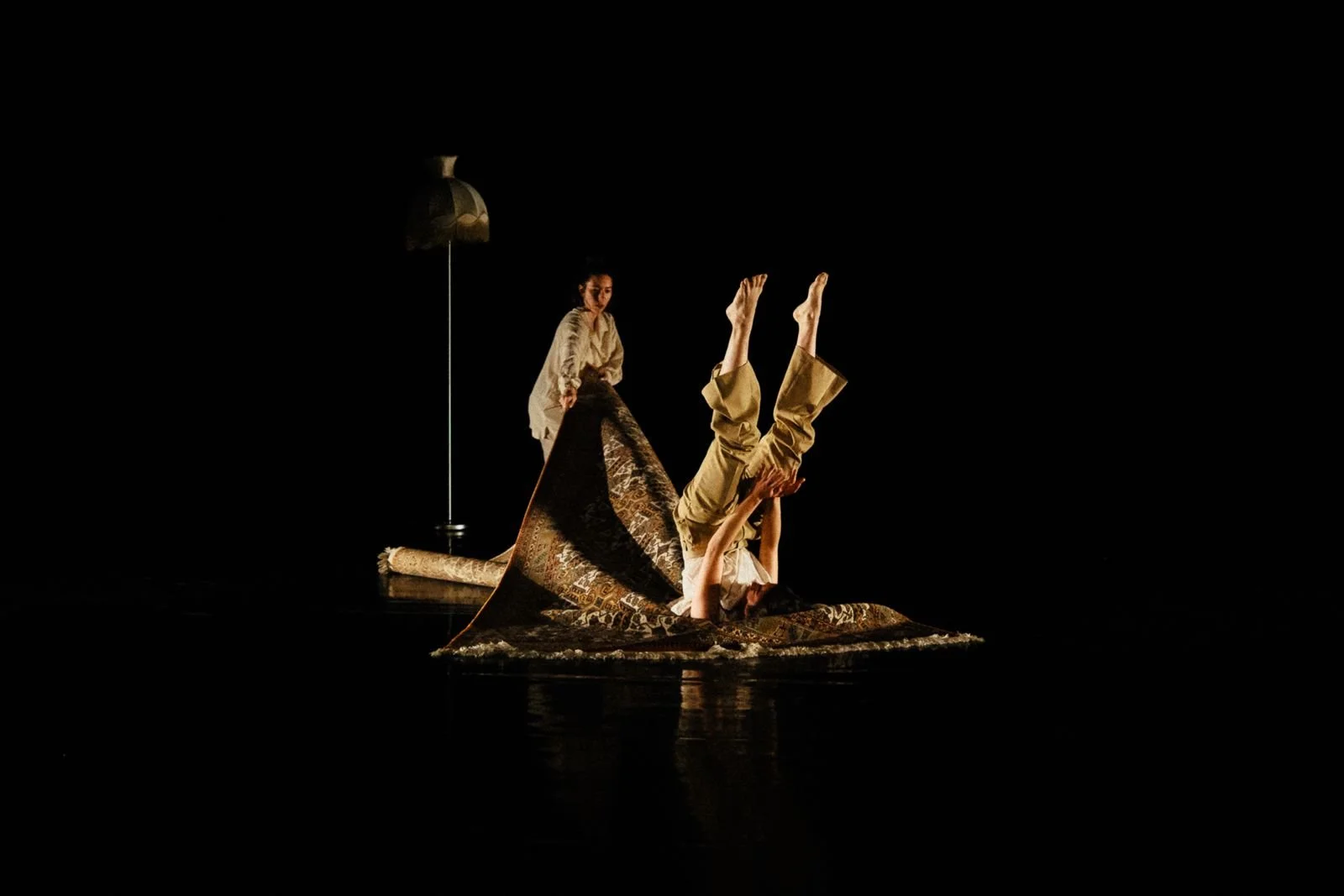Premiered at Hiçhane-Konya, April 2024
Project Manager and Concept Design: Şiva Canbazoğlu
Choreographers: Şiva Canbazoğlu, İlayda Evgin
Performers: Şiva Canbazoğlu, İlayda Evgin
Music Originally Composed By: We Parade
Music Performers: Hakan Sevim, Kuzey Tekinalp, (We Parade)
Light Design: Kevin Beyer
Costume Design: Gizem Saluvan
Production Manager: Gökçe Özgen
Creative Process Supported By: Çıplak Ayaklar Kumpanyası, Kabile Sahne
Photographer, Visual Content: Zeynep Demirhan
'How Now Becomes Then' delves into a contemplative space, exploring the delicate transition of the present moment into the past. The 45-minute performance is structured in three parts. Through the narrative of two bodies, three musicians, an antique 'grandma's' carpet, and an antique lamp, the piece conveys the concept of time as a manifestation of movement. Each reality has its own rhythm, speed, and flow. Accordingly, we are part of a choreography much larger than ourselves. This choreography varies across every corner of the universe, changing depending on the observer and the observed. Events observed do not simply vanish after occurring; they continue to expand infinitely in different forms. Similar to entropy, they symbolize not just a concept evolving into chaos but, in our synthesis, the transformation of what has happened, because chaos is also a form of harmony.
As a piece choreographed in Istanbul, the creation process and concept were influenced by the harmonized chaos inherent to the city. The cultural, social, and historical richness of the area contains traces from different eras, creating a sense of time manifesting itself through multiple dimensions. The adaptation of our understanding of time from a linear plane to a spiral motion is one of the starting points. This signifies that what has happened in the past still manifests itself within space. The performance explores our perception of time and its connection to Istanbul’s ancient history, with its texture and value added over time. This concept manifests through the scenography, costumes, and a musical piece that parallels our culture. Therefore, the relationship between the bodies-movement and scenography are in a mobile exchange. Meaning scenography is not just a set up, but a medium that is also choreographed, and in a constant relation with dancers.
Through the fragmentation and ramification of its material, the performance adopts a rhizomatic structure, allowing for an unfolding of inherent possibilities. This approach mirrors entropy, where movement phrases and the relationships between bodies constantly evolve. Performance, by its nature, is a fleeting creation—existing only in the present moment and space, brought into being by those who witness it. Once that moment passes, only the memory of the performance remains. However, these memories do not resemble a perfectly preserved photograph of the original moment; instead, they evolve and transform alongside our own experiences. As memories are recalled, they gradually weaken, sometimes to the extent that they may lose their connection to reality after a certain point.
To elaborate on the relationship between time and memory: as time passes, memories undergo a dynamic process of consolidation and reconsolidation. Neurologically, this involves strengthening neural connections associated with the memory, but also their susceptibility to modification. Over time, memories can fade or become distorted through a phenomenon known as memory decay or interference. Additionally, our brains tend to prioritize certain memories over others based on emotional significance or relevance, further shaping how they are retained and recalled. This neurobiological framework underscores the fluidity and subjectivity of memory, illustrating how our recollections are not static representations of past events but are continuously shaped and reshaped by the passage of time.
This concept is projected onto the structure of the piece, where in the first section, we establish a common ground with the audience—a poetic material that later, in the second part, begins to evolve into other directions and outcomes. In the third section, the piece starts to remember itself, creating another situation in space and time.
To communicate a universal, physical, and metaphysical concept, the relationship between the dancers is undefined and open for the audience to interpret. The dancers serve as channels to narrate the concept without possessing any social, emotional, or cultural status. The emotions and relations are in constant flux throughout the piece.
‘How Now Becomes Then’ explores and interprets how the present moment exists through concepts of fragmentation of time, entropy, memory, and temporal narrative, derived from the idea of how the present shifts with the past and future, through images, movements, words, materials, and sounds.
Video Gallery
Trailer | 1
Trailer | 2
Trailer | 3
News Broadcast
photo Gallery
212 Photography Istanbul, at Galata mekan. Performed by Noemi Calzavara and Siva Meryem Canbazoglu. Photos taken by: Emirkan Corut
COBAC’ Photos taken by:Berk Armagan
MSGSU

